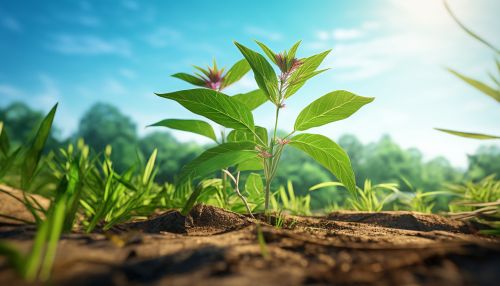Mechanisms of Plant Defense Against Environmental Stresses
Introduction
Plants, as sessile organisms, are constantly exposed to a variety of environmental stresses. These stresses can be abiotic, such as drought, extreme temperatures, and soil salinity, or biotic, such as attacks by herbivores and pathogens. To survive and reproduce under these conditions, plants have evolved a range of defense mechanisms. This article will explore the various mechanisms of plant defense against environmental stresses.


Abiotic Stress Defense Mechanisms
Drought Resistance
Drought is one of the most common and severe environmental stresses that plants encounter. Plants have developed several strategies to cope with water scarcity, such as reducing leaf size to minimize water loss, developing deeper root systems to access water from deeper soil layers, and closing stomata to reduce transpiration.
Temperature Stress Resistance
Plants can experience temperature stress in the form of either heat or cold stress. To cope with high temperatures, plants can produce heat-shock proteins that help to protect and repair damaged proteins. In response to cold stress, plants can increase the fluidity of their cell membranes by changing the composition of fatty acids in the membrane lipids.
Salinity Stress Resistance
High soil salinity can cause osmotic stress and ion toxicity in plants. To deal with salinity stress, plants can exclude toxic ions from uptake, sequester toxic ions into vacuoles, or synthesize compatible solutes to maintain osmotic balance.
Biotic Stress Defense Mechanisms
Herbivore Resistance
Plants can defend against herbivores through a combination of physical and chemical defenses. Physical defenses include thorns, spines, and tough leaves. Chemical defenses involve the production of secondary metabolites that can deter herbivores, such as alkaloids, tannins, and terpenoids.
Pathogen Resistance
Plants can resist pathogens through both preformed and induced defenses. Preformed defenses include physical barriers such as the cuticle and cell wall, and chemical defenses such as antimicrobial compounds. Induced defenses are activated upon pathogen attack and can include the production of antimicrobial compounds, the strengthening of cell walls, and the activation of programmed cell death to limit pathogen spread.
Conclusion
Understanding the mechanisms of plant defense against environmental stresses is crucial for improving crop productivity and sustainability in the face of changing environmental conditions. Further research in this field can provide valuable insights for the development of stress-resistant crop varieties.
